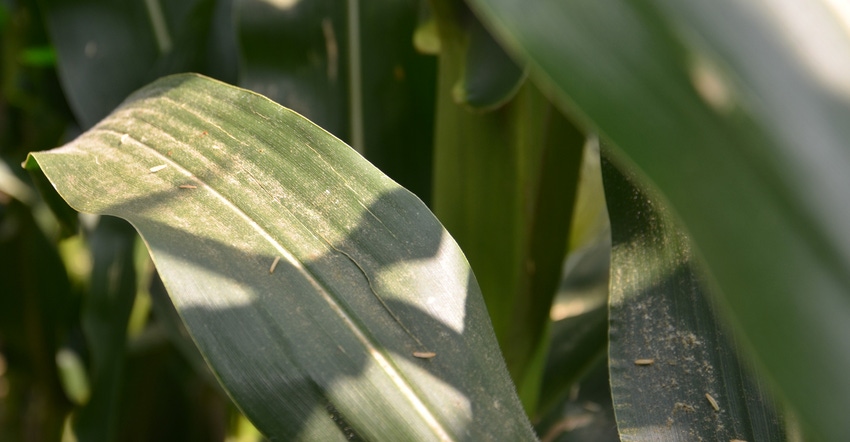
Watching corn reach waist-high is exciting. That’s especially true if it’s green and healthy, there’s plenty of moisture, and things are going well. Crops consultant Dave Nanda says your job is to pay attention to fields to make sure the crop is as healthy inside as it appears to be from the road. If there are diseases, insects or nutrient deficiencies at work that could affect plant health and yield, you need to know now.
That means getting into the field and scouting, Nanda says. That may not sound too appealing, especially as corn grows above your head and pollinates. But knowing what’s going on in fields is essential.
Quick guide
Here is a quick guide of key things to look for in corn throughout the season. It’s based on Nanda’s experience, plus the 2018 edition of the Purdue University Corn & Soybean Field Guide. Nanda is an independent crops consultant based in Indianapolis. He assists with the Corn Watch project, which follows a field through the entire growing season with the goal of highlighting possible situations you might find in your cornfields. Corn Watch ’18 is sponsored by Seed Genetics-Direct, Washington Court House, Ohio.
Here are some problems to keep an eye out for:
• Leaf disease lesions. Catch these while they are on lower leaves and small, Nanda says. Once you find lesions, scout at least weekly. Based on the genetic resistance of the hybrid to each disease, the type of lesion and weather conditions, you will eventually have to decide whether to apply fungicide or not.
The goal is to prevent lesions from reaching the ear leaf during pollination and grain fill, Nanda says. If it appears lesions will reach the ear leaf or even go higher, he strongly recommends a fungicide application to protect these important leaves.
It’s important to identify the type of lesions you see, Nanda notes. Gray leaf spot features rectangular lesions 0.5 to 2 inches long and tan, gray or brown. This disease prefers warm, humid weather with long dew periods.
Northern corn leaf blight develops as larger, tan lesions that grow together. It favors moderate temperatures in the range of 65 degrees F to 89 degree F, plus long dew periods.
Goss’s bacterial wilt, although less common, can occur, and features light tan to gray lesions with dark flecking. It’s important to identify this disease, Nanda says, because fungicides aren’t effective on it. It’s caused by bacteria.
• Common and southern rust. Common rust may show up in June, while southern rust typically doesn’t appear until later in July. Both cause pustules on leaves and require dew periods of at least seven hours to develop.
• Corn rootworm and corn borers. Stalk lodging or goosenecking can be caused by wind damage, but it can also be caused by rootworm feeding. If you didn’t apply insecticide, decide if it’s worth digging and examining roots for corn rootworm larvae. They begin to hatch about the time fireflies appear. If larvae are present, they will feed on corn roots in early June.
If you have non-GMO corn, you should look for signs of first-generation corn borer damage. Shot-hole feeding can occur. Count the number of plants infested if you notice this type of damage.
• Silk feeders. As you move close to pollination, be on the lookout for adult corn rootworm beetles and Japanese beetles. Both can clip silks. If silks are clipped back to one-half inch or less before pollination is 50% complete and beetles are present, treatment may be justified.
About the Author(s)
You May Also Like




